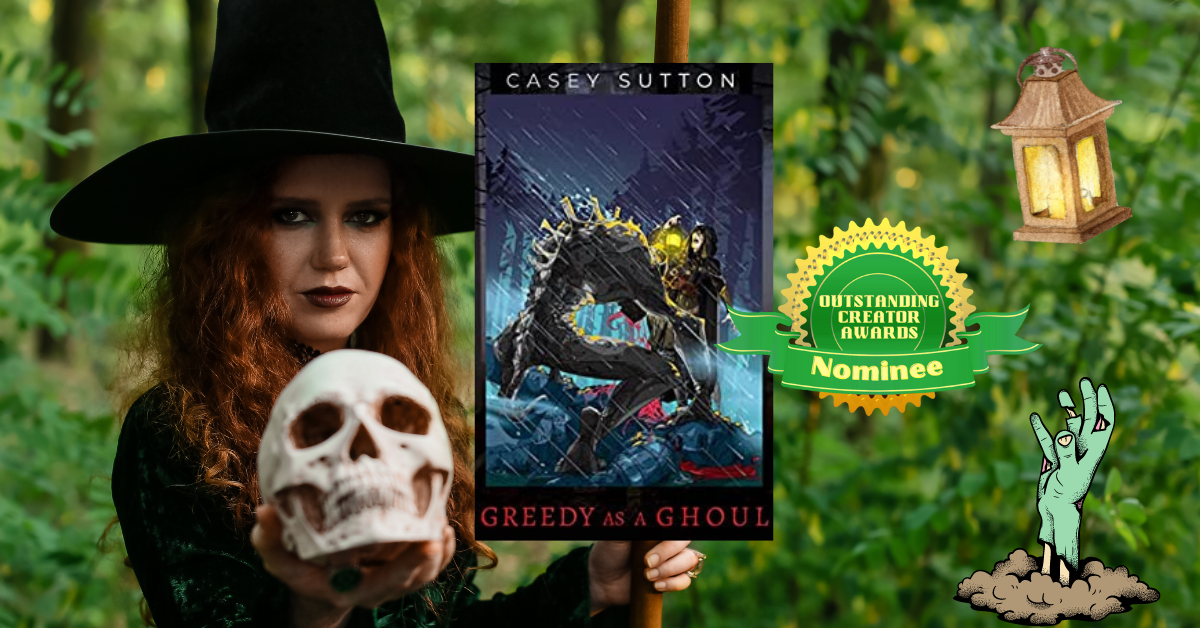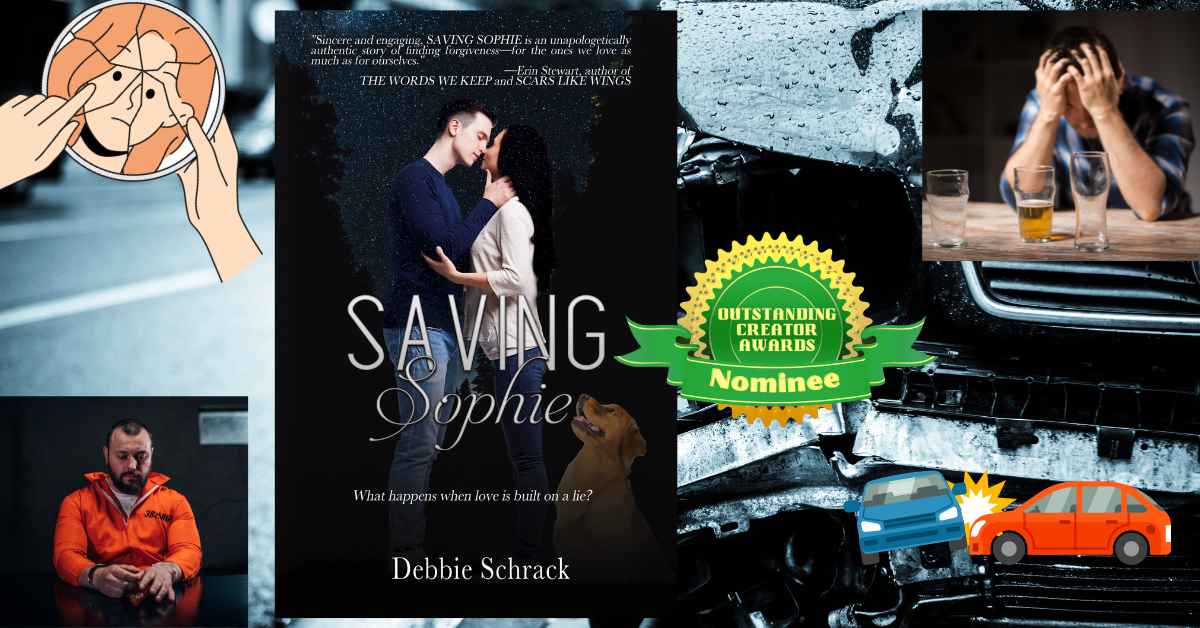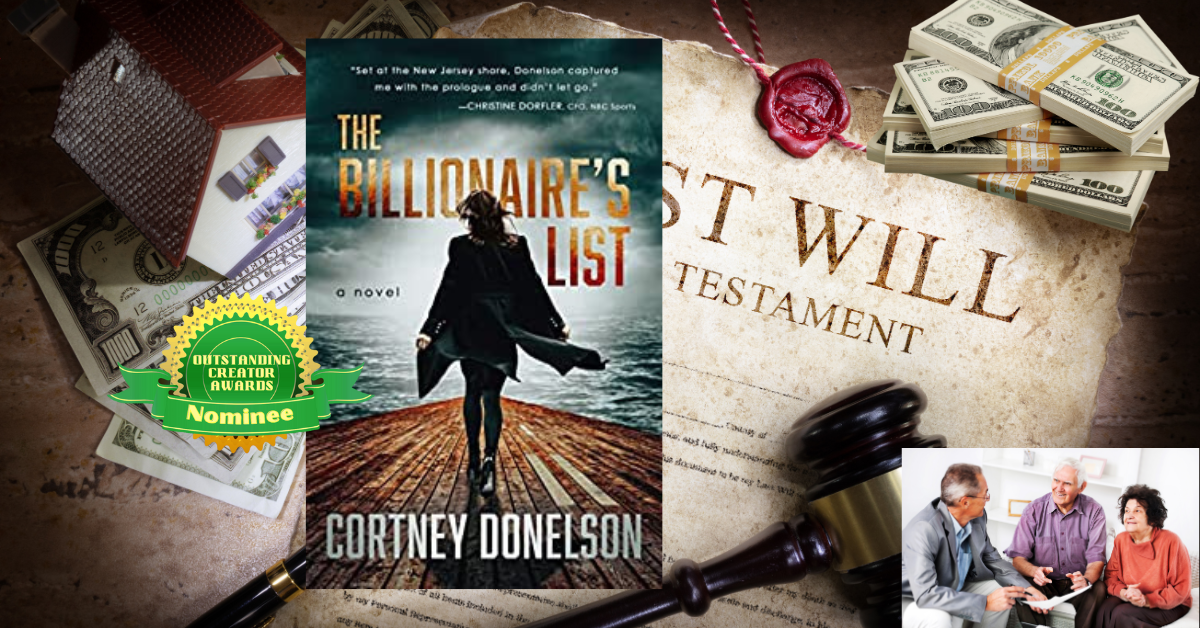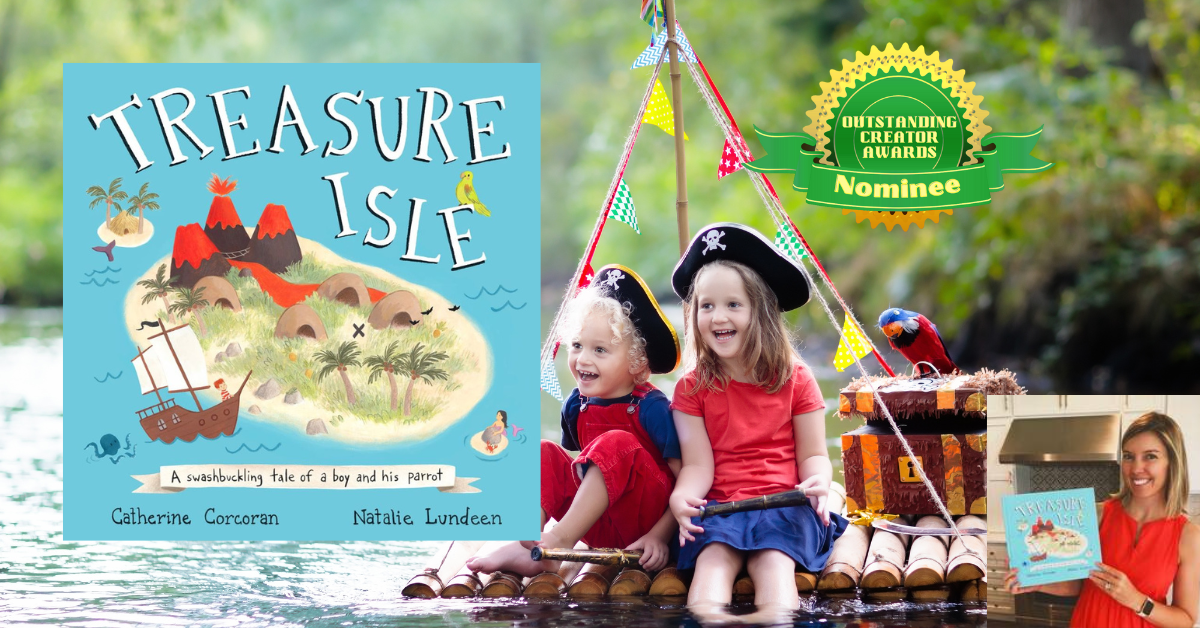|
Score: 94/100 (9.4 out of 10)
This is the definitive chronicle of a man, a man who changed the course of human history and scientific thought forever. Albert Einstein is perhaps the most famous scientist ever, and his face is one of the most recognizable in history. However, though some may recognize many of his scientific discoveries, few understand the actual man—the mind—behind those discovers. To many, he is an enigma: an extremely intelligent man who did some extremely great things. This impressive book by Dr. Gary S. Berger pulls back the curtains and allows you to get to know Einstein through rarely-shared photographs, documents, and letters. Some of these appear to have been compiled from museums, archives, and even from the back of stationary that apparently belonged to Einstein or his family. This book is compiled with so much love and care. The thought, work, and effort that must've went into putting this all together must've been astronomical! We commend that. Einstein: The Man and His Mind chronicles the remarkable, unparalleled life of Albert Einstein from his breakout year in 1905 to his dying day in 1955 at the age of 76. What's particularly spectacular in light of all of this is that Einstein continued to teach and make discoveries into his twilight years. Of particular note are 1906 (the year of E=MC^2), 1915-1916 (the period in which he wrote and published his theory of relativity), 1921 (the year in which he won the Nobel Peace Prize), 1933 (the year in which he left Nazi Germany for Britain), and 1999 (the year in which he was named Time Magazine's “Person of the Century” before Gandhi and FDR). There are seriously too many highlights of Einstein's life to count! For entertainment purposes, though, this book may test your patience. If you try to read it from beginning to end like a traditional book, you may find yourself a bit bored. This is more like a picture book, similar to the ones in the front of Barnes & Noble that are sorta novelty items. You're not supposed to linger on one page and read it word-for-word. It's better if you just go from picture to picture and soak in the gravity of what you're seeing (no pun intended). This is one of those encyclopedic books that you keep lying around on a shelf hoping that your kids will someday stumble on it and be inspired. If you are a fan of Einstein, the history of scientific discoveries in the 20th century, and/or Einstein's work, this book is the ultimate chronicle of that. Check it out on Amazon!
0 Comments
Score: 89/100 (8.9 out of 10)
The question “WHO AM I?” is one of the key questions to our existence. It's a question that just about every human being who has come to maturity has had to ask themselves. Here are some examples: “I am a teacher” “I am a soccer player” “I am gay” “I am Latino” “I am tall” “I am smart” “I am significant” The question of “WHO AM I?” is something we thought about when reading A Franklin Girl's Story: Roses by Dave Mayer. The book follows a high school junior named Cali who lives in the titular town of Franklin, Illinois. Cali would likely determine: “I AM A GOLFER.” Cali is a relative loner with one close friend in Brandy and a close-knit relationship with her father, mother, and family-friend Hank. Her father has instilled in her a love for the sport of golf, something which they also share with Hank. She is trained by Coach Wilson into a formidable force, but Wilson dies rather early into the book. This begins a sort of theme of Cali losing people to sudden and unexpected deaths. At first, this was impactful and emotional, but it became overdone at a certain point. In fact, the losses tended to blur together to the point where, by the end of the book, we were wondering who died and in what circumstance. Another theme in this book is Cali coming to maturity, coming into her own, and discovering herself. Along the way, she gets her first boyfriend (Tommy), discovers that she may be bisexual, and even considers doing things like getting a tattoo (ideally a rose tattoo). As you might expect, roses are a reoccurring motif in the book, occurring in dozens of different scenarios. Cali herself isn't a particularly appealing protagonist. There's something about her that's difficult to describe, but it's just... a gut feeling. Perhaps it's that she's supremely arrogant and also a bit self-centered. She constantly looks for ways to get one-up on other people, even people who are being courteous, kind, and friendly. Yes, that may be an aspect of being competitive, but Cali takes it to the extreme. She seems to hate her competition and anyone else who might be a little better than her. She can be bratty and rude at times, like when she yells at Tommy for something that doesn't make much sense to him. Perhaps explaining her sexual orientation in a polite and educational manner may have sufficed. Instead, she attacks and later vilifies him over it. Also, it's not entirely unnatural for someone to be concerned that their love interest/girlfriend/partner might be attracted to other people. It's the same for heterosexual relationships. Heterosexual partners wonder if that one hot guy at work is hitting on their girlfriend or if the busty new office clerk might be flirting with their husband. By exploding at him, it just shows that Cali is a one-track mind, self-centered person who fails to put herself in other people's shoes. A lot of Cali's character development consists of her losing people and reacting to it or learning she's moving somewhere and reacting to it. We know that sounds harsh, but there's some truth to that statement. She's actually a rather static, somewhat flat character. Again, it's difficult to describe, but she never really gets us up on our feet and cheering for her, or even crying for her when something bad happens to her. Now, it's interesting to see her progress as a student, and particularly as an athlete. Her competitive golfing is by far the best part of this book. She competes in various golf contests against various opponents. One of the most memorable was her showdown/duel with Leslie, a strong golfer of equal talent. There are about 3-4 of these competitions, each serving as a highlight in their own right. However, the family/friend relationship dramas run amok. It's similar to what happened in All-American on the CW channel. It became much less about the sport (which we all came to see) and much more about personal drama. To an extent, that's fine, but we really wished this was a book more focused on the golfer actually golfing. Much of the dialogue and many of the interactions between the characters are quite flat anyway. For example, there are several instances in which characters just greet each other like (to paraphrase): “Hi, what's up?” “Nothing much, how about you?” Or “I got accepted to OU!” “That's cool. Congrats.” There seems to lack an oomph to most of these interactions. The only one that really stands out to us is the aforementioned meltdown that Cali has over her sexuality not being understood by Tommy. Still, if you love sports (especially golf) and drama, this might be a cool book to check out on Amazon! Score: 95+/100 (9.5+ out of 10)
The Stress Book by Terrence Foster, MD will likely go down as “the king” of self-help books so far this year! Yes, we're saying that this is probably the best all-around self-help book we've read this year. What makes it so great is that it has tremendously valuable practical applications. That means that you can take the advice and use it immediately. It can make your life easier and more manageable, give you a better perspective of things, and remind you how much you have to offer to the world (and how much the world has to offer for you!) This book is a healthy reminder that there's so much joy, love, and opportunity to be found in the world, yet we often feel miserable, sad, depressed, hopeless, frustrated, and angry. Many come to resent and despite the people who have the things they don't. They become envious and hateful. Many stay in toxic relationships because they feel that terminating or leaving a relationship is a sign of “failure” or “weakness.” Many allow stress to pile up in their lives, accepting that it's just a part of life and that they have to live and die with it. They never flip an “off” switch, never switch their cellphones to “Do Not Disturb,” and never say “no, I can't right now.” They allow other people (i.e. employers, spouses, family, friends, acquaintances, etc.) to take advantage of them and run them into the ground. Let's face it: STRESS KILLS. It likely contributes to hormonal disruptions like high cortisol levels, poor LDL-HDL cholesterol balance, high blood pressure, thyroid problems, adrenal fatigue, depression, anxiety, and more! And, plain and simple, stress stinks. It leads to negative feelings and emotions. It gets us “down.” It makes us feel overwhelmed and ruins are enjoyment of life. Now, this book isn't about completely avoiding stress. A certain amount of stress is normal. Moderate exercise is a stress. Moderate work (for employment) is acceptable. One of the keys is realizing that you are not an immortal, indestructible robot. You cannot run yourself into the ground indefinitely or forever. This book is about stress MANAGEMENT. It's about avoiding conflicts when possible. It's about not wasting energy and time on trivial things and picking your battles. It's about realizing which relationships are healthy and worth maintaining, and which ones aren't. There are so many great things about this book. For one, it is well-written and well-structured. It helps that chapters are split up into prose followed by bullet points. Also, the tips aren't usually idealistic. They're practical and realistic, at least for the most part. There are some great quotes in here from a variety of people across the socio-political spectrum from Collin Powell, Trevor Noah, Barrack Obama, Golda Meir, Max Ehrmann, and more. One of our favorite parts of this book was the one that encourages the reader to cover their bases and look after themselves, working toward ensuring personal safety and that of their loved ones. That could mean keeping self-defense weapons on hand and/or learning a martial art. There's also a reminder to protect yourself online, making sure that your personal information, accounts, and passwords aren't compromised. This book made us feel like “cleaning up” our own lives, working out, and taking better care of ourselves! It even inspired us to consider going on vacation (a very rare thought on our end)! Check it out on Amazon! Score: 89/100 (8.9 out of 10)
Greedy as a Ghoul is the short-story debut of author Casey Sutton and a prequel to their upcoming fantasy novel Malfus: Necromancer Unchained. It definitely got us interested in reading the full work! This teaser is a serviceable story with an interesting lead protagonist, Malfus the Necromancer, who lives life on the edge in more ways than one. He's sits on the precipice of good intentions and corruption. He also hangs on the edge of starvation and death himself. It also benefits from impressively good, detailed, and colorful writing. There are seriously some gorgeous lines in here. Here are a few examples: “Sword and dagger served as judge and jury” “...a cacophony of cawing and yapping” “Cords of muscle bulged under the ghoul's translucent skin” If the end product (Malfus: Necromancer Unchained”) is written with the same quality as this, then it could very well score a 9.4 or higher. Really, the thing holding this book back is how unfinished and incomplete it feels. Don't get us wrong, what's here is good. Some of it, like we listed, is great. It just... feels like something's missing. We're guessing that's the point because it wet our appetites and got us wanting more, but at the same time we have to compare a book like this to something like Captain Jack and the Battle of the Five Kingdoms by David Bush and Sword Above All by Domenic Melillo, books that are solid, complete, well-told stories from beginning to end. By comparison to its competition, the story leaves a lot to be desired. Event the maps and illustrations, which look like they had a lot of effort put into them, suffer from some sort of drop of pixel rate/quality that makes them look worse than they should. Still, Malfus is a promising character with a lot of potential. How cool of a premise is this? Haunted by the death of his lover, Kiara, Malfus comes into possession of mystical texts capable of giving him powers over the dead. He pursues this route, in a very Dr. Frankenstein-like manner, so that no one will have to suffer the sting of death as he has. Similar to Dr. Frankenstein, his noble goal becomes a frightening obsession that threatens to unhinge him as well as his world. He even calls it a “noble endeavor.” What he's doing is not just macabre, it's pretty much desecration. He even carries the severed finger of Kiara with him in a box to motivate himself. He takes the approach that it's easier to ask forgiveness rather than permission (“humanity can thank me later...”). He also becomes quite vain and egotistical despite the fact that he probably looks like a corpse at this point (“...the world will remember my name”). The premise of this book sees a starving Malfus come upon the corpses of soldiers from a recent battle—the ultimate test and opportunity for his necromancer abilities. Ironically, despite living off his last bit of jerky, Malfus is surrounded by frenzied and feeding animals who follow his grizzly journey. It is a world filled with danger, zombies, and ghouls—monsters both outside and inside. Check it out on Amazon! Score: 95+/100 (9.5+ out of 10)
Saving Sophie by Debbie Schrack is a very special book, one of our favorites of 2023! There's just something about it that packs a punch yet does it in a way that isn't full of itself or over-the-top. It isn't a perfectly structured story. It isn't a perfectly written story. The stakes aren't world-ending or world-altering. The characters won't blow you away (in fact, we didn't even realize the main character had a name until near the end of it). However, it is what it is. And it does it so well! It hits just the right notes. It's powerful, beautiful, and compelling all at once. Furthermore, it is such a sweet and romantic story full of humor and light. Seriously, this book is such a joy to read! It is actually very pleasant. We know that's strange to say about a work of fiction (shouldn't they all be “pleasant”), but you'd be surprised. Many books, despite their quality, can be so depressing and miserable that it starts to eat away at you. This book, on the other hand, is hopeful, optimistic, and uplifting, even when it deals with things like incarceration, physical and mental illnesses, alcoholism, guilt, and even death. There's still an underlying feeling of warmth and comfort to it that's difficult to describe, almost like a really good family Christmas movie. The interesting thing is that the main character isn't even that optimistic or positive of a guy. In fact, he's doubtful, apprehensive, and even angry at times. However, just about 100% of the time we're assured that all of his actions are justified by noble motives. He is a good guy, but one who is rough around the edges sometimes. Everything he says and does, whether out of anger, jealousy, or frustration, still seems 100% justified to the reader. Almost all of the time, the reader will likely conclude that they would've acted the same way and said exactly what the main character does. And that's the thing. This book puts us directly in the main character's shoes. In a good and immersive way, he almost becomes a blank slate for us to engage with the other characters and his world. In some novels, this can be a bad thing. For example, the Twilight series infamously presents Bella as a blank slate who proves to be a relatively bland character. That is not the case with the main character of Saving Sophie. Notice that we keep calling him the “main character.” Does he have a name? Actually, yes! But we didn't even have to know it to care about him. He's actually referred to as “Gabe.” For most of the book, interestingly, other characters refer to him as “you,” “bro,” “little buddy,” and other pronouns. So, what's fascinating is that when character talk to him, it almost reads like they're talking directly to YOU. Now, that might just be because we're idiots and completely spaced on him being called Gabe over 150 times, or maybe that's just how we felt. We were so immersed in Gabe's story that, like a video game character, we BECAME him in a sense. And it was easy because Gabe was, like we said, a good guy. He wasn't one of those first-person characters that you dread following because they make poor or immoral choices. Gabe is almost always justified in one way or another, and you understand him. Anyway, let's finally talk about the plot (phew... it took us this long)! This book follows the aforementioned protagonist, Gabe, who was on the verge of great, big things in his life. He is a stellar student, a tutor, and is hoping to get into a good college. He really seems to be someone who longs for their place in the sun. And, for the longest time, he had a great, loving family that held firm to their traditions. All of that is seemingly derailed and shattered when Gabe's older brother, Josh, gets into a catastrophic accident. Although he escapes with his life, several others in the accident lose theirs. Among them are the Mandelas, parents to the titular Sophie—one of the school's most successful and promising students. Sophie, tragically, is inflicted with a traumatic brain injury and amnesia. Compounding this, she often experiences seizures. It is discovered that Gabe had been drinking and was intoxicated during the accident. Several things come as a result of this accident, the two key things are:
Now, before you go off thinking that this book is just some mushy South Korean soap-opera/romance/drama, it's actually much more. In fact, it's hilarious. Gabe's thoughts (which we get the inside scoop on) are often very blunt and even crude or vulgar at times. Here are some of our favorite funny lines from the book: “...they sell out faster than Trojans on prom night” “And let's face it—no one can sit on one of these chairs for longer than ten minutes without getting hemorrhoids.” “We walk to the door slowly, hand in hand, while Joe [the dog] sniffs around and pees on some bushes.” “She stops and stares at me. Her expression goes blank. I wonder if she's going to have a seizure but Joe's just lying on the rug licking his crotch.” “Abby's behind him wearing a black dress about the size of a square of toilet paper.” There are so many high points of this book. So many times when we laughed or were elated with joy. Check this out on Amazon! Score: 91/100 (9.1 out of 10)
THE DEAD SPEAK! Well, sorta. Richard Goldman is a recently-deceased billionaire who has left behind a fortune, property, and an all-important will & testament. In these end-of-life documents, he named a number of people who meant something to him, key of which is his mysterious estranged grand-niece, Greta Goldman. Now, if you're thinking this sounds a bit like The Testament by John Grisham, then you're right. It is a bit like that. However, rather than be fixated on a lawyer's point of view like Grisham was, this book focuses on Greta herself. Believe it or not, this adds to the intrigue because you're literally following the person in question to a point of realization. Greta (or the protagonist we get to know as “Greta”) is a rather interesting character. She is a New York Times best-selling author with fame comparable to someone like Sarah J. Maas or Stephanie Meyer. However glamorous and idealistic as this might sound, when we first meet her she's under tremendous pressure from her publisher and fans to publish her next book, Give or Take. The author's life is a stressful life. It becomes even more stressful when Richard's mysterious death becomes of personal interest to her. Richard didn't just die, he was murdered. And he wasn't murdered by just anyone, but a serial-killer who becomes known as the “Millionaire Club Killer”--a killer who specifically targets rich people. It turns out that Richard had a lot of people who loved and admired him, and he also had a fair share of people who hated and despised him. For example, it turns out that for all his success in various industries, he failed in the restaurant business, causing financial hardship and suffering for all involved. He also may have failed in some of his relationships, particularly as a parent and grandparent. Little by little, the mystery grows deeper and we become more and more intrigued. At one point, we are struck by the possibility that the Greta we know is not Greta at all! Perhaps there are two Gretas! Or one Greta and an impostor! It's seriously like an episode of Maury, complete with DNA tests and all! It also kinda reminded us of The Man in the Iron Mask in which there seems to be two people who share the same identity and are competing to be recognized as such for their own ends. This book has as many twists and turns as a dangerous highway, and we love it for that. Now, there was a little bit of silliness with this book. For example, some of the names are obvious inside jokes. There's Richard GOLDman (the dead rich guy), Detective MOODY, Detective REED (as in “Read”), Special Agent TURNER, Uncle BILLIE and Aunty JEAN (as in the Michael Jackson song), DAWN (as in the dawn of the morning) etc. You could even argue that Edith, like maybe Agnes, is such a classic elderly-woman's name. We had a few chuckles and laughs about these names. This book is exciting in that it keeps you guessing about who is who and what is really going on. Why was Richard killed? Who killed him? Who is the real Greta and what does she want? Who is this enigmatic, socially-awkward Mallory? What does Mallory want? What is her story? The one thing we did not like about this book was the ending. It felt like so much was built toward something the murders, yet we don't get a clear, satisfying conclusion to that. Either there will be a sequel or you might have to reread the whole book to pick up clues on your own. Your reaction to this will depend on the kind of reader you are: one who likes an ending that wraps everything up into a nice, neat bundle, or one who likes a ending that leaves things open-ended or up to your interpretation/imagination (like Castaway, perhaps). You can check it out on Amazon! Score: 95/100 (9.5 out of 10)
Treasure Isle by Catherine Corcoran is everything that a children's book should be! It's fun, it's colorful, it's exciting, it's adventurous; it follows some compelling characters, it holds the promise of uncovering buried riches, and it rhymes! That last bit might not seem important, but think about many of the books that hooked you as a kid. Think about the children's books that perpetually capture the attentions of your kids/students. Rhymes are largely what made Dr. Seuss the GOAT that he's known as today. These are usually colorful books that are FUN to read! Above all, they usually rhyme and have a catchy rhythm to them. This book accomplishes that, having a song-like rhythm complete with the leitmotif/verse “So, they set out again on the salty, blue sea.” This verse usually bridges into the next scene with the two characters, a boy and his parrot, trudging along on their adventure to find Treasure Island. This book is full of wonder, excitement, adventure, and a strong spirit of exploration. We are stunned that this book is listed at only 19 pages long because it reads like an epic! Along the way, the boy and his parrot have a lot of ups and downs. They encounter penguins, a whale, a crocodile, big waves, mermaids, a chameleon who loves its bling, a volcano, and more! Your kids might really enjoy reading along with you and pointing out many of the various animals/characters they see! This book might even inspire your children to come up with their own little stories, exercising their creative minds! Check it out on Amazon!  Score: 87/100 (8.7 out of 10) So, is everyone dead? Are we in purgatory? Are we in Hades? Is this the Hotel California? Are we in an alternate/parallel reality like Neverland? Are we in some sort of fantastical pocket universe like in Once Upon a Time in which the events in fiction books actually happened and are crossing into our world? This book has so many different angles and interpretations. That can be a very good or very bad thing depending on the kind of person and reader you are. If you're someone who loved the non-linear, edgy, chaotic, yet choppy nature of something like Pulp Fiction, you might like this book. If you're someone who wants a story with a three-act structure with a clear hero and a clear villain, grounded in a gritty, realistic setting, then this book may not be for you. This book is SURREAL, hence the Neverland comparison. It's almost like a dream. Maybe you haven't thought much about the contents of your dreams, but normally, dreams are made up of random thoughts, feelings, emotions, and experiences—either manifest or latent, real or imagined. They often skip from thing to thing, topic to topic, and much of it gets forgotten or challenging to recall by the time you wake up. That's what this book is like. Now, dreams are awesome. They're just not always... comprehensible. However, there are people who enjoy interpreting (or trying to interpret) dreams. It's almost like solving a puzzle, in a sense. Either you like doing it or you don't. We can tell you that this book primarily follows John Proctor, a man moving back to New England on the verge of turning 70. Each day brings John “closer to the old bone yard.” He returns to New England realizing that it may reopen some old wounds. John has had a long and storied life including a past he has seemingly suppressed. However, reality comes knocking on his front door when he encounters Eli, a boy who reveals that he may be descended from John. He is the grandson of one of John's late wives, Sara. There is also a potentially scandalous angle to this. John and Eli continue to swap ideas and conversations about some of their interests and experiences. Prominent among these interests is an interest in classic literature, namely The Scarlet Letter by Nathaniel Hawthorne and Moby Dick by Herman Melville. Interestingly, one of us also wrote a book which used descendants of characters from these exact same books. What a coincidence! What's interesting is that the characters from these two novels seem to blend and blur into reality, almost as if they're a part of the narrative of this story. And maybe they are. In a strong sense, the characters and themes from Hawthorne and Melville's works overlap with those of John and Eli. For example, John's promiscuity and sexual sins make him comparable to Hester Prynne. Eli's quest to know John—the unknowable old man—and to better understand his roots parallel Ahab's quest for Moby Dick. His desire to simply be a part of something bigger and to find himself on a journey parallels Ishmael, a character he is constantly compared to. There are also references to some of the characters who don't get near enough respect and attention like Tashtego. One motif that keeps occurring is Queequeg's coffin, the object on which Ishmael floated and survived on after the sinking of the Pequod by Moby Dick. It's fitting in that it symbolizes that one can find their “life” (or appreciation for it) while on the verge of death. It's kinda difficult to sum of this book without spoiling things or messing up our interpretation entirely. The truth is, different people are going to have different interpretations of this very surreal novel! What's yours? You can check it out on Amazon! Score: 92/100 (9.2 out of 10)
The Girl Who Loves Lemons is a very unique and charming children's book by Debbie Vehnekamp. It follows Courtney, a girl (and later a full-grown woman) who LOVES lemons! Beyond just her love for lemons, this book is about the passage of time, sentimentality, and how, despite things changing and evolving, some things always stay the same—like the love for something as mundane and simple as lemons. A love for dinosaurs. A love for fast cars. A love for soccer. A love for ice cream. A love for blueberries. These types of things are our “mainstays” or “anchors”—the things that we go back to in order to recapture a good feeling or to remind ourselves of who we are, where we've been, and what we've experienced. Call it nostalgia, perhaps. So, this book is so much more than meets the eye! Speaking of “meeting the eye,” the illustrations in this book are truly impressive! There's a real hand-drawn, hand-colored look to them. All of them are colorful, but not so colorful that they become distracting. They aren't shell-shaded (from we could tell) or AI generated, so there's a real sense of authenticity to them. The artist was very good at showing the different emotions and expressions on characters' faces. The writing is also solid. Yes, it's slightly wordy and doesn't always flow perfectly, but it's grammatically correct and relatively easy to read. There is a certain randomness and spontaneity to this book, skipping from thing to thing. On one page, the book is talking about Courtney, on another page you're getting random facts about lemons or tips on eating them. It kinda disrupts the flow of any coherent narrative, making it a little bit of a “beautiful mess.” We can dig a beautiful mess! However, we wonder if the point of this book was to tell us about Courtney's life experiences or to teach us about lemons. It doesn't always flow and mesh well when we're constantly flip-flopping between what Courtney is doing and information about lemons. At the same time, it has a certain charm and appeal that we appreciated. Check it out on Amazon! Score: 92/100 (9.2 out of 10)
The Pirates Conquest is an exotic, erotic, exciting adventure/romance novel featuring love, hate, passion, betrayal, scandal, and drama galore. This book is filled with so many ups and downs—a lot of downs in terms of things not going well for the characters. Along with drama, you expect some tension and turmoil. However, this book depicts a dog-eat-dog world where people use, abuse, betray, and take advantage of each other. This perhaps reflects one of the themes that emerges in this book: that “good guys” don't always wear shining armor or capes, sometimes they wear devil horns or carry pitchforks. Sometimes the good guys wield a rapier, have a peg leg, and sport an eye-patch. Ok, that might be exaggerating a bit. The protagonists or “good guys” of this novel are pretty messed up people in their own right. Our lead male protagonist, Captain Timothy Lockwood, is pretty much responsible for at least one sexual assault. Let's not sugar coat things. He's a pirate. He has done just about every evil deed that a pirate is classically known for, so much so that he becomes known as “Tim the Bloodthirsty.” The least of his sins include purchasing at least one [sex] slave and having an affair. He's a man of poor choices, and that's something that repeatedly gets brought up. Usually, “gray” characters like anti-heroes or anti-villains are the most interesting, and we tend to get behind them because we relate to their weaknesses and vulnerabilities more. However, Timothy's actions, attitude, and behavior is so despicable at times that's it was difficult for us to actually get behind him. The only reason(s) we're really cheering for him are: 1. The main character loves him, 2. He's not as bad as Geoffrey. Case in point: even when he's “redeemed” and comes to the realization that he loves the main character (cause, of course, how could this story go any other way?), he still does aggressive, forceful things like covering her mouth when she speaks objections and choosing what clothes she wears (such as when he chooses her emerald dress). Later on we meet one his most loyal followers, Dante D'Mattea. Again, similar to Tim, Dante might seem like a decent fellow with a love interest of his own (Serena) and a seemingly noble heart, but he is every bit as ruthless as Tim the Bloodthirsty as well as the clear villain of the novel, Geoffrey Lyndon. These heroes are not really great people. And Dante is liable to fall into temptation as much as the next guy. We'll talk a bit about Geoffrey later because he comes up time and time again like a bad habit. This book mostly follows Jennifer “Jenny” Weatherly, our main female protagonist and the main love interest of Captain Timothy. Jennifer is a relatively sheltered, high-born girl whose father, James, has bestowed a large amount of his estate and riches to. This makes her a prime target for the power-hungry Geoffrey who sees marrying Jennifer as a shortcut to power and riches. Jennifer's naivety becomes obvious when she believes that pirates are just a part of the fiction literature she reads. Still, she shows budding strength in resisting the forced marriage to Geoffrey. She reminds us a lot of Belle from Beauty and the Beast. She even becomes emboldened enough to attempt an escape aboard Captain Tim's ship, the Moonlight, something which immediately puts her and the ship's crew in jeopardy, as if they weren't already hunted/wanted people! The frustrating thing about Jennifer, in our opinion, is that she is a classic damsel in distress, and boorishly so. That's fine, to an extent. There are great damsels in distress like Lois Lane, Mary Jane, and Princess Peach, but the problem is that it seems clear that Jennifer was intended to be the main character—the driving, active force behind the events of the novel. She was supposed to be growing and developing, becoming more mature, more independent, and stronger as the book went along. She does, to an extent, but her arc is quite neutered compared to the potential that it had. Instead, things seem to always happen to Jennifer rather than Jennifer doing things or working toward things. She spends so much of this book just trying not to die. She's always trying to survive. And, yes, survival is an important instinct and adds some tension, but it almost seems like she's waiting out the plot. How many times does the same character have to be kidnapped and rescued? How many times does the same character have to be tossed around, used and abused, sold, traded, and sexually assaulted for the audience to get the point? Why does every character with testicles have an attraction to her? Like, we get when someone is hot and attractive, but does every single man in this book have the exact same tastes? It reminded us of League of Extraordinary Gentlemen when every single male character regardless of their background or orientation develops a crush on Mina, the vampire lady. Like, some dudes in real life prefer women who won't eat them. Some like blonde women. Some like brunettes. Some like Black women. Some like Asians. Yet, it almost seems like everyone in this book is magnetically attracted to Jennifer's red hair and green eyes. Yeah, it's special and unique, probably features shared by about 1% of women, but there comes a point when all the leering and the hooting and the cat calling by every male under the sun becomes ridiculous and overdone. We get that the character is SUPER HOT. We don't need to be reminded every five pages about how that's her defining characteristic. Anyway, there were times we were a bit annoyed by the two lead characters. One is a terrible person who makes terrible decisions. One is a weak person who seems to invite trouble. She's like Ashley from Resident Evil 4. She seems to just stand there and gets herself grabbed, stabbed, sick, and shot at. It's really frustrating when considering the hopes we had for her. Originally (for the first quarter of the book), we had a very different point of view on Jennifer. We were about to compare her to someone like Jane Eyre or Emma. What's interesting is that this book reads a lot like one of those classics... like Jane Eyre or Emma. It had bits that reminded us of Pride & Prejudice--the tangle of scandals and love-triangles/love-cubes run amok. There was even an aspect of this book that reminded us of The Count of Monte Cristo, especially with the parts that dealt with seafaring. Then again, one of the most modern comparisons to this book is 50 Shades of Gray. There seems to be a sort of Stockholm syndrome that seems to take hold of the main characters in this plot. There are times when Tim is abusive, aggressive, and adulterous in his relationship with Jennifer. Well, we promised to get back to Geoffrey, so let's talk about him. Geoffrey, again, is the villain of this book—a book filled with terrible people like Ginger and Captain Mark Gregory. Geoffrey ranks among the most terrible. The thing is that Geoffrey is like an Austin Powers villain or Wil-E-Coyote: he seemingly can't stay dead no matter what you do to him! At first, it was suspenseful and interesting. Then, it just became funny and almost sad. You know like how you start to feel bad for Tom from Tom & Jerry every time he gets horribly mutilated and dies? Well, it wasn't quite at that level, but it was getting there. Geoffrey is not just a terrible person, he's a pitiful person. (On the note of pitiful people... POOR SEBASTIAN. Oh, gosh. That poor giant man. He deserved better.) Going back to what we were saying about the theme of the book, Geoffrey is on the opposite spectrum of where Timothy is. Timothy is a thug, and he knows it. Society knows it. On the other hand, Geoffrey is a relatively high-born “gentleman” who figuratively wears the shining armor and rides the white horse. Society expects him to be “good” and the “hero,” but he is actually a despicable person and a villain. So, in a sense, that dynamic worked. That theme played out well. There's also a series of love-triangles/love-cubes involving about at least a half-dozen characters. Furthermore, there's an inheritance subplot that involves Stefan (Jennifer's cousin) going from “poor Stefan” to Mad Stefan (we thought he was about to replace Geoffrey as the villain). Furthermore, there's another subplot that involves Timothy serving as a captive navigator on board a rival captain's ship. There's also a subplot that involves Jennifer sold and held captive (again) and pimped out in a brothel. Now, to be fair, the last two subplots play side-by-side and reflect the idea that Timothy and Jennifer are two people who are suffering and struggling separately, yet haven't given up hope of seeing each other. So, it's quite romantic in that regard. It's sorta like how Prince Charming and Snow White in ABC's Once Upon a Time kept getting separated, yet always promised and strived to find each other. Now, there is an unintentionally funny moment in which a character says (to paraphrase), “He's not dead, I felt it.” This reminded us of when Darth Vader refuses to believe that Padme, his wife, is dead in Revenge of the Sith. Ok, the difference between Darth Vader and Jennifer is that Vader had the Force and thus had some degree of extrasensory perception. Jennifer isn't a psychic. Or is she?......... Ironically, the author IS a practicing psychic and card reader. So, in the author's mind, it might be plausible for someone like Jennifer to sense the fate of a loved one across the universe. And, let's face it, some of us can just sense these things. Call it “intuition.” Call it “clicking” with someone. Call it “wishful thinking.” Whatever it is probably exists to a certain degree. This is a solid novel with a lot of action, adventure, and romance! It has some issues such as the character issues we mentioned. It is also missing commas when addressing people in dialogue. However, that's very minor and easy to overlook. Check it out on Amazon! |
Archives
July 2024
Categories |









 RSS Feed
RSS Feed